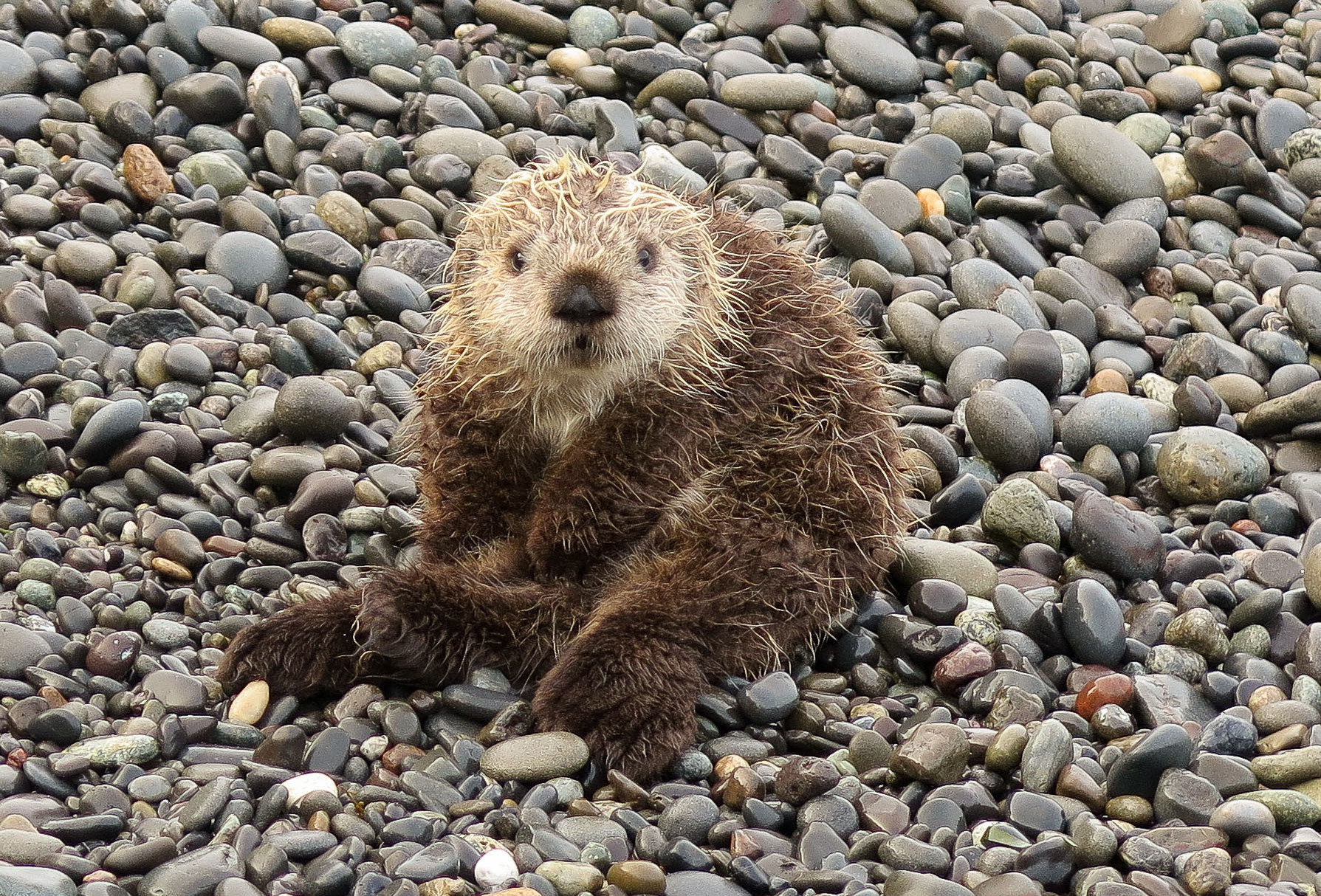
Washington State
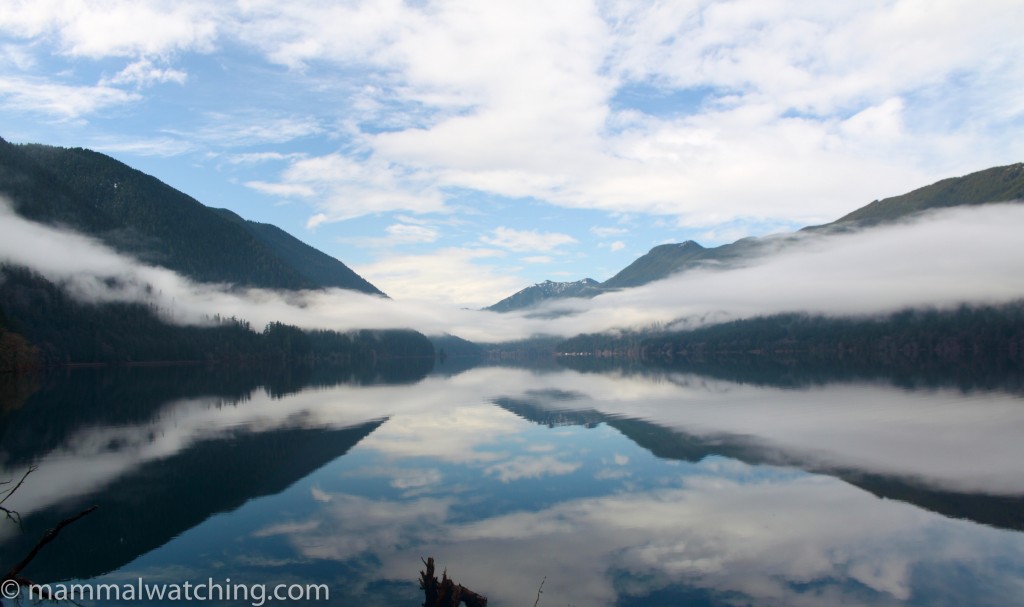
Olympic National Park
Washington State is home to some quality mammals and spectacular scenery. I visited in February 2009 for the first time and had a couple of days to look around. February is not a good time to find mammals and it was even worse than expected after a late snow storm dumped 8″ on the Olympic Peninsula. But it didn’t stop me trying. In October 2009 I returned for a day and the first snow of the winter was falling. Other trips include a couple of days in August 2010, a weekend in May 2012, a few hours mammaling in August 2014, and a night in July 2015.
The Olympic Peninsula
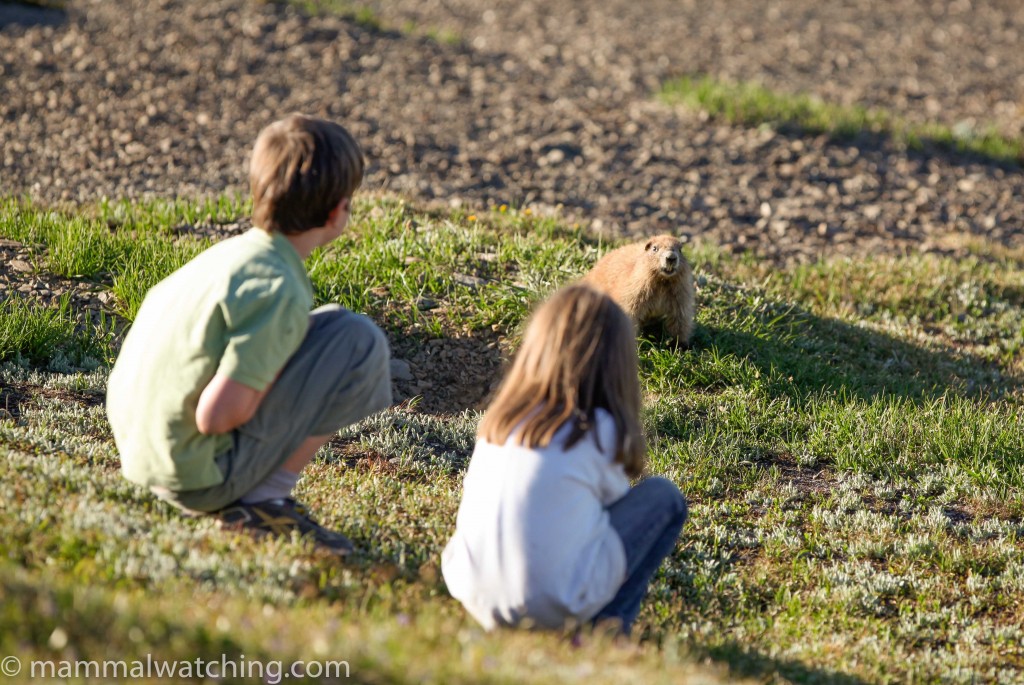
Patrick and Katy get up close and personal with an Olympic Marmot.
I had been corresponding with Coke Smith from Washington for a few months and I managed to blag an invitation to stay at his place. And what a place it was: on the edge of the ocean with its own private forest and Mountain Beavers (or Boomers as the locals call them) living in the yard. Coke and Som plus little Cokie couldn’t feed me enough food, pour me enough beer or try to find me enough mammals. And all this for a stranger. I was overwhelmed with their hospitality.
Coke and I spent a half a day in Olympic National Park around Port Angeles and despite the snow he managed to find me the Columbianus race of Black-tailed Deer, a Douglas Squirrel and lots of Harbour Seals on the spit in Port Angeles. We set some traps around his place and caught several Western Deer Mice.
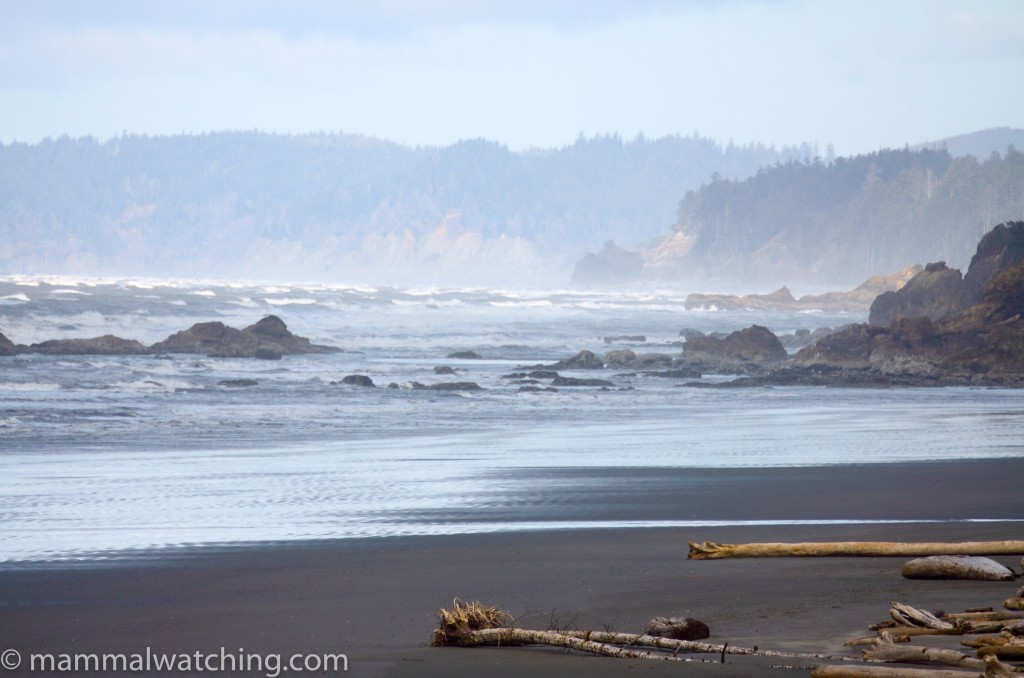
Olympic coastline
I spent a second day on the peninsula after I had finished some work in Seattle and headed to Kalaloch. A stunningly beautiful coastline, while the Hoh Rainforest was like something out of the Lord of the Rings, without those annoying Hobbits.
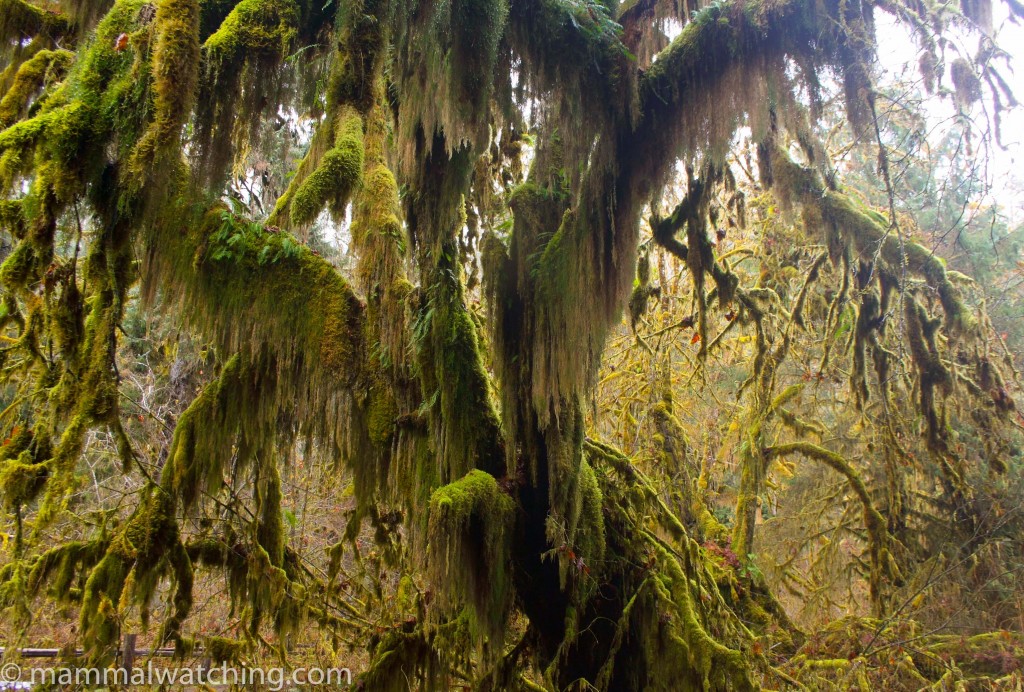
Hall of Mosses, Hoh Rainforest
There were plenty of Deer Mice (mainly Keen’s Deer Mice) in the traps I set just outside the park and a couple of Rooselvelt’s Elk at the Hall of Mosses by the Hoh Rainforest visitor centre.
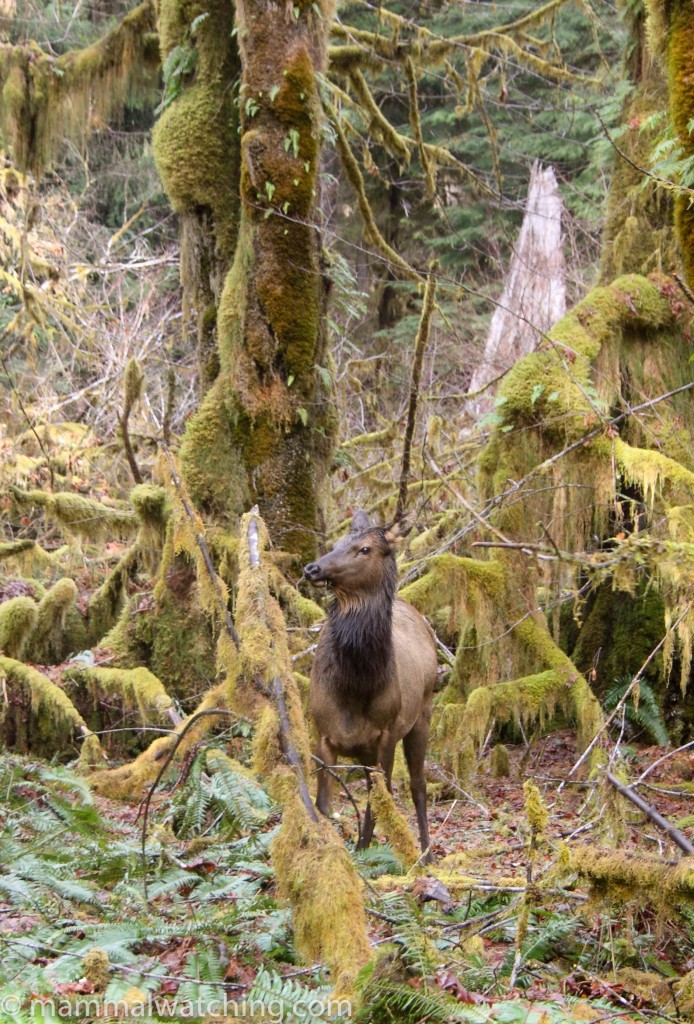
Roosevelt’s Elk, Cervus elpahus roosevelti
Driving back to Coke’s place I saw a large vole scurry along the roadside for a couple of seconds in the mid afternoon before it was grabbed by a hawk. By a process of elimination it must have been a Townsend’s Vole. A tickable lifer for me, even if a dodgier tick than I would have wanted.
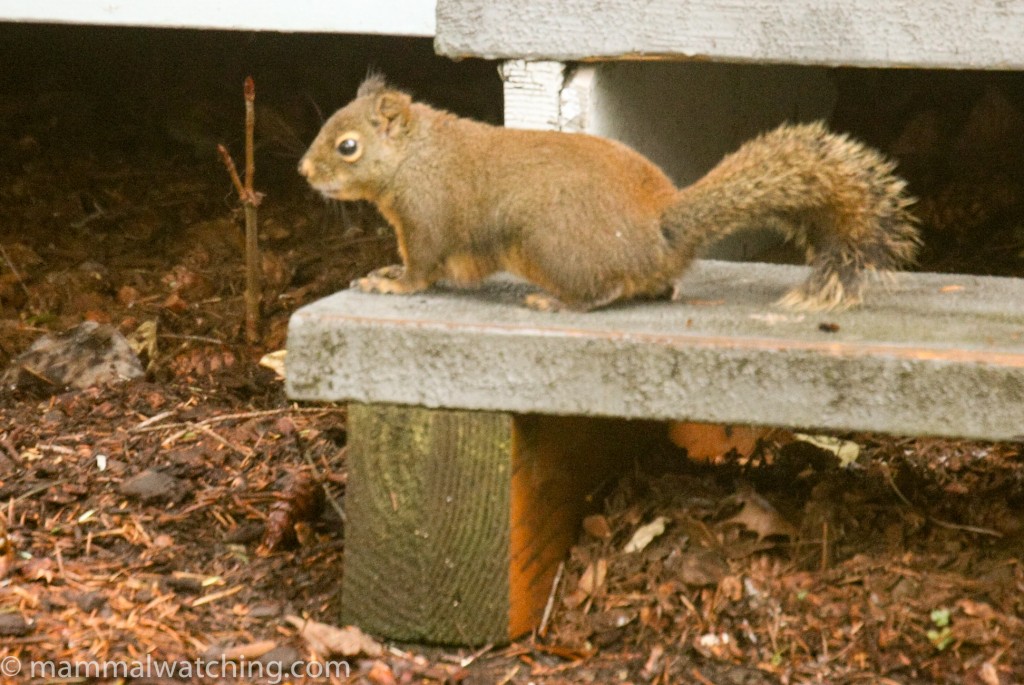
Douglas Squirrel, Tamiasciurus douglasii
Back at Coke’s place we found a Raccoon during some impromptu night driving and then hit pay dirt when the traps he had open all week finally caught a Mountain Beaver (Aplodontia) at the 11th hour. This was the species I wanted to see most and it was a truly groovy little thing.
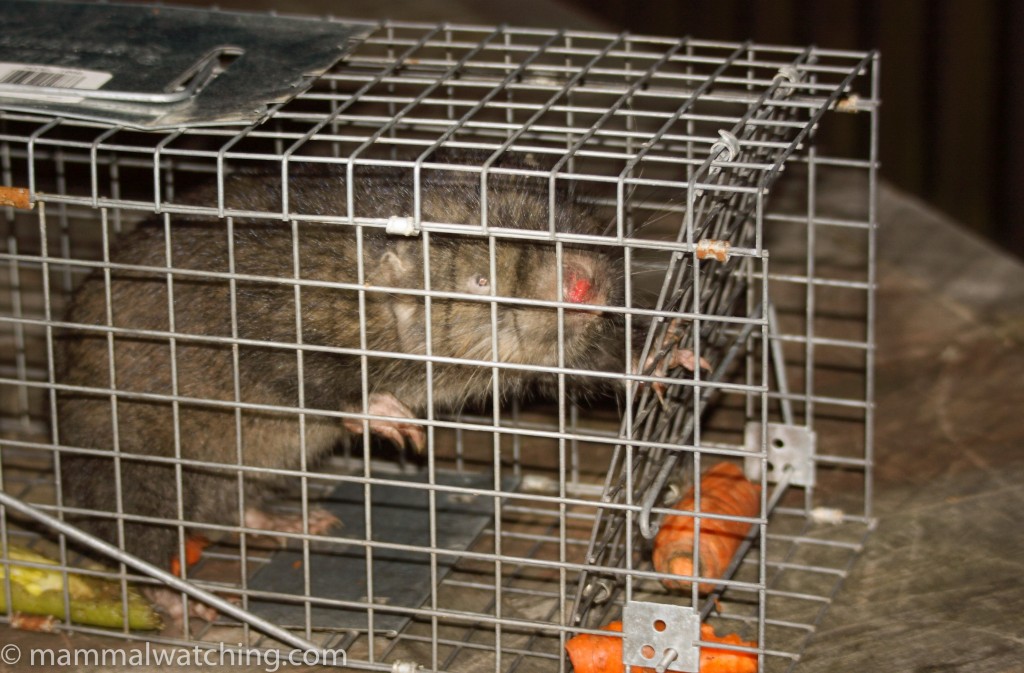
Mountain Beaver, Aplodontia, Sewellel, Boomer, Ground Bear or Giant Mole, Aplodontia rufa
Because of the weather it seemed that just about all of the Townsend’s Chipmunks which I wanted to see were still in torpor. Coke had seen one a few days before I arrived but I didn’t talk to anyone else who had seen one that year. In summer they are very common (just try any campsite on the peninsula I reckon, though they have largely been driven out of Seattle by the Western Grey Squirrels.)
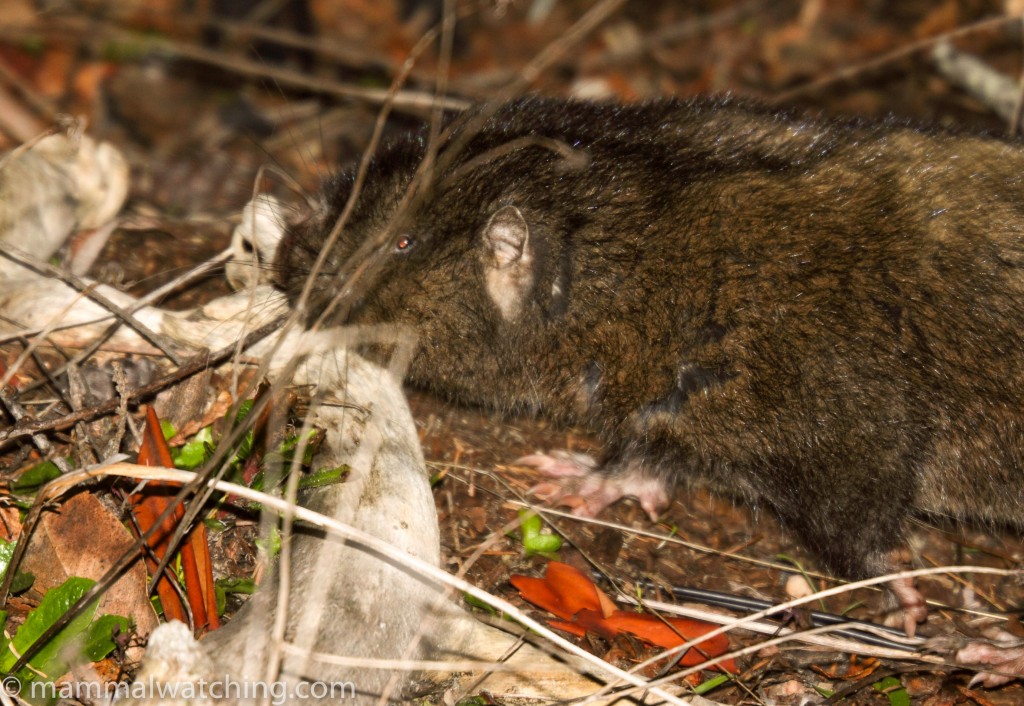
Mountain Beaver or, Sewellel, Aplodontia rufa
Olympic Marmots are common in the summer in the high country but they were hibernating during February (and even if they weren’t the road was closed). Yellow Pine Chipmunks (the caurinus subspecies) are also findable when you can get into the higher bits of the park. Coke has seen Bobcats quite often, while Black Bears, Pumas, River Otters and (authentic) Beavers are among the species that live near to Port Angeles.
Hurricane Ridge
I was back in Seattle in October for work and returned to Coke’s place for a night, and spent most of the day poking around the Olympic National Park looking for Chipmunks and the endemic Olympic Marmots.
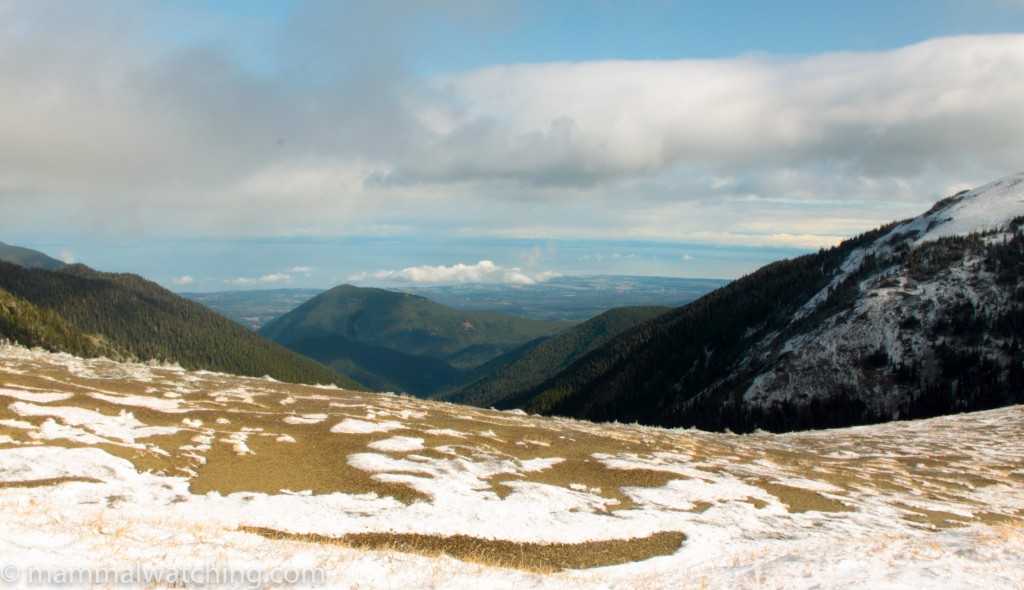
Hurricane Ridge
In summer the Marmots are easy to see up on Hurricane Ridge and you can drive up there once the road opens (which is sometimes as late as June). The road to Obstruction Point is particularly good apparently. Marmots usually hibernate by mid September but Coke had seen them active later and I might have too had there not been a fall of snow the night I arrived. I drove up to the ridge and couldn’t see any marmots, but did meet a couple of hikers returning from the backcountry who had seen a couple of marmots the day before.
I saw a Mule Deer and several Yellow Pine Chipmunks on Hurricane Ridge, with others in the Heart O’ the Hills campground.
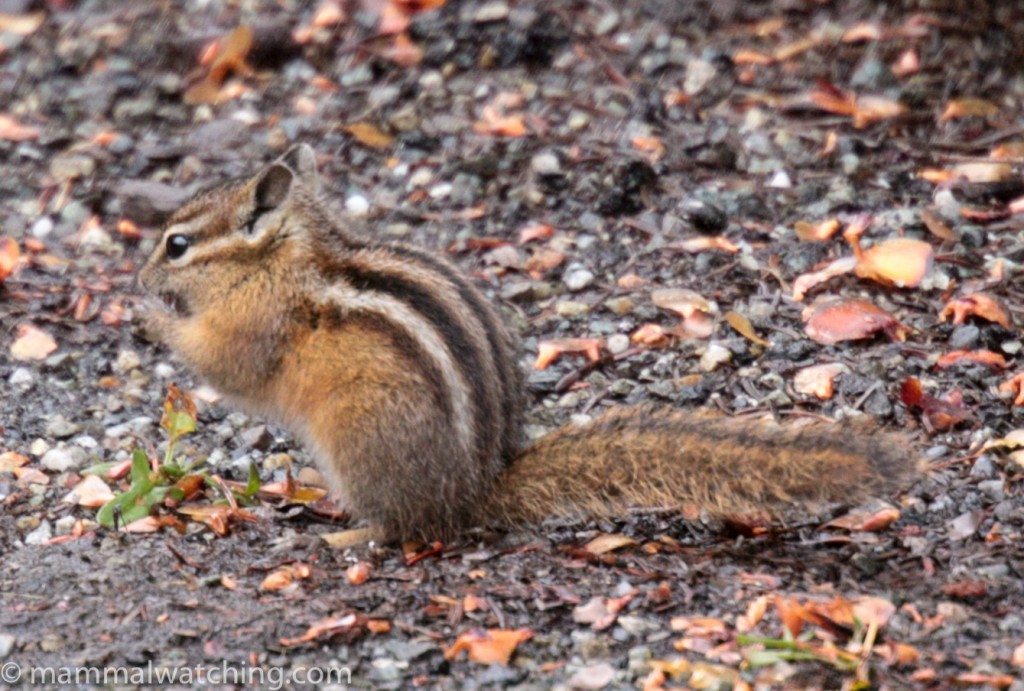
Yellow Pine Chipmunk, Tamias amoenus
Townsend’s Chipmunks, which apparently only live in lower elevations were harder to find. I think I saw a couple in the Heart o’ the Hills I wouldn’t swear that they were not Yellow Pines.
But Coke has them at his place and we caught one in a Sherman Trap. The pale stripes on the back were much less marked than in the Yellow Pine.
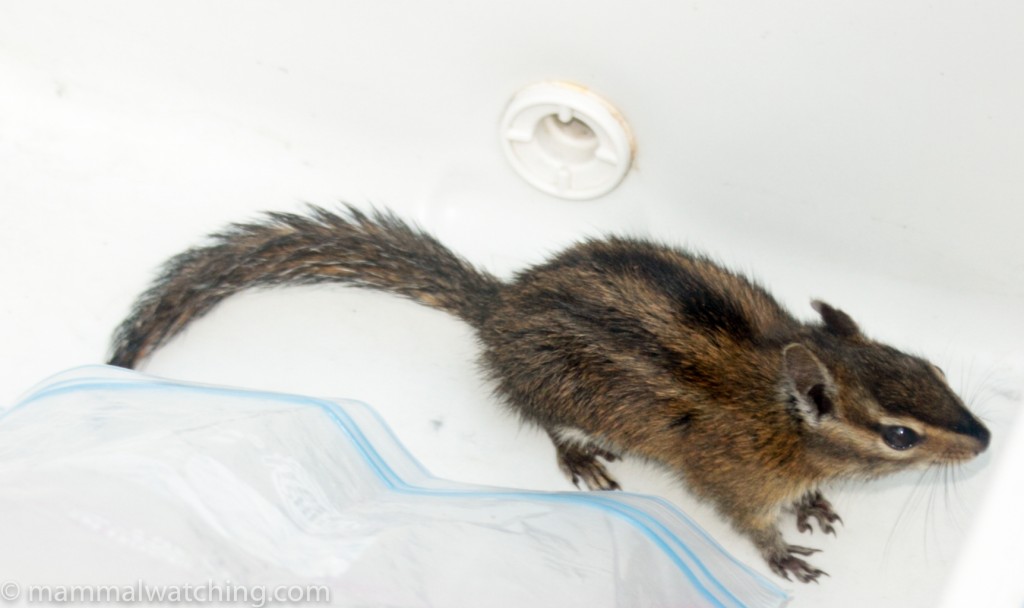
Townsend’s Chipmunk, Neotamias townsendii
We also got a couple of Keen’s Deer Mice on Coke’s property.
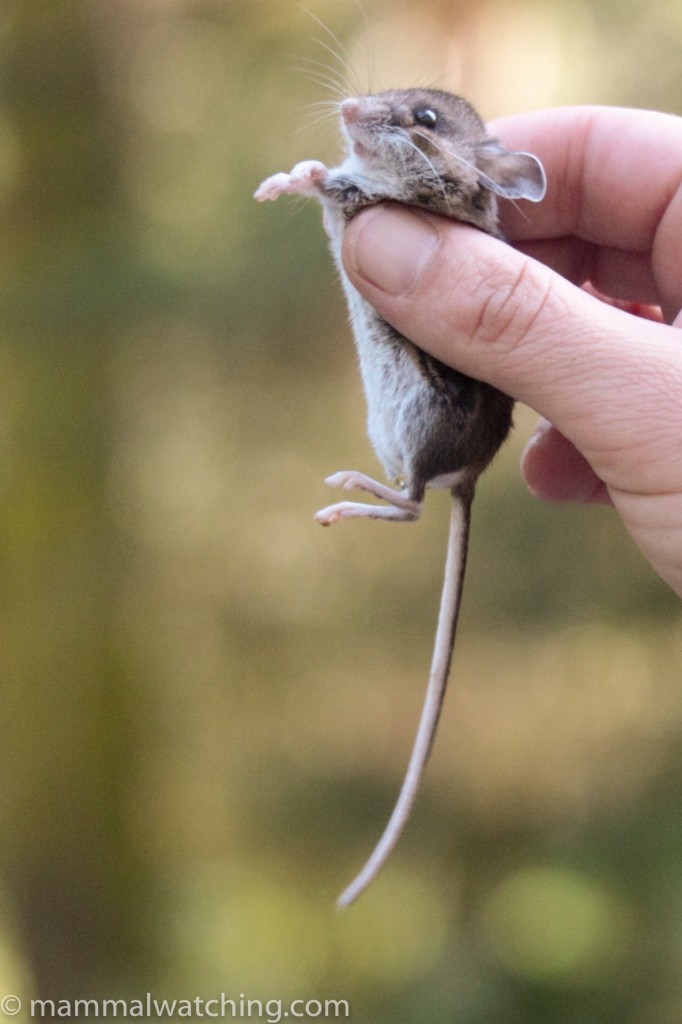
Keen’s Deer Mouse, Peromyscus keeni
In August 2010 I finally caught up with some Olympic Marmots. The rangers at Hurricane Ridge said the only way to see one was to walk a couple of miles along the trail at the end of the tarred road, but after five minutes of my 6 year old daughter’s increasingly loud complaining I decided that this wasn’t an option.
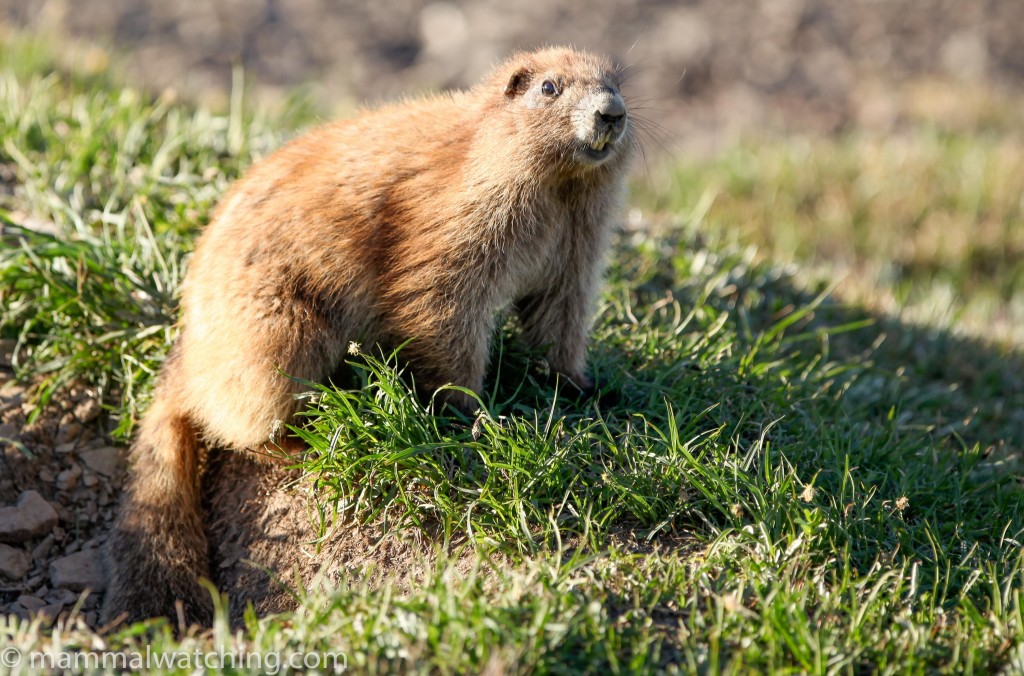
Olympic Marmot, Marmota olympus
So I drove along Obstruction Point Road and found Marmots easily about a mile or two from the end of the road, on the left hand side (travelling away from the ranger station) in the first bit of alpine meadow that you come to. There were several marmots here, their whistles carried for miles, and one at least was very approachable.
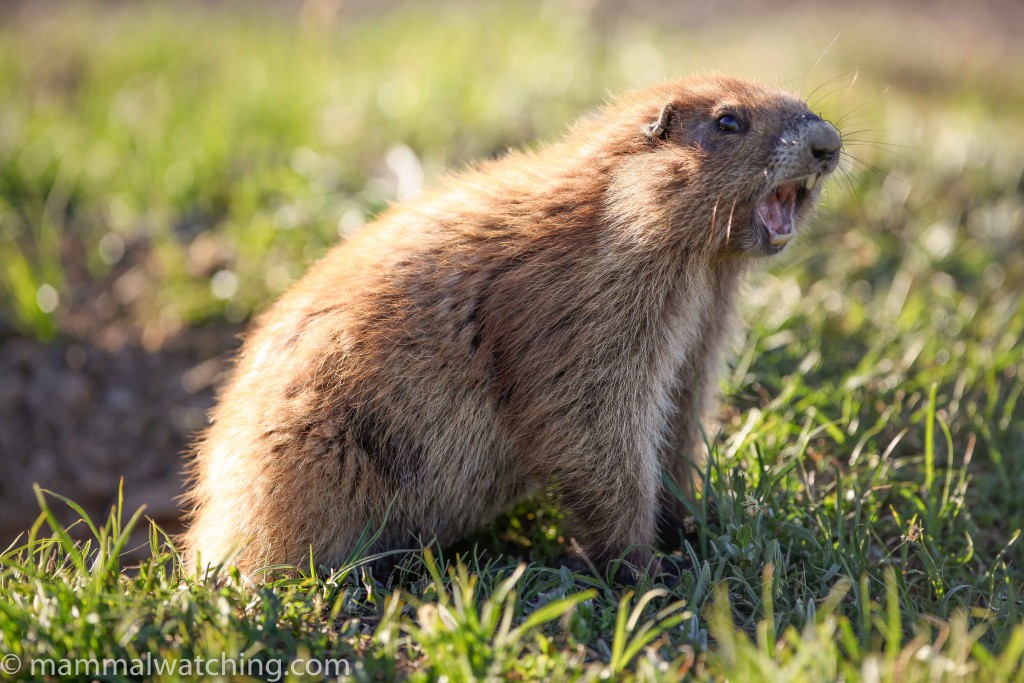
Olympic Marmot, Marmota olympus
Rialto Beach
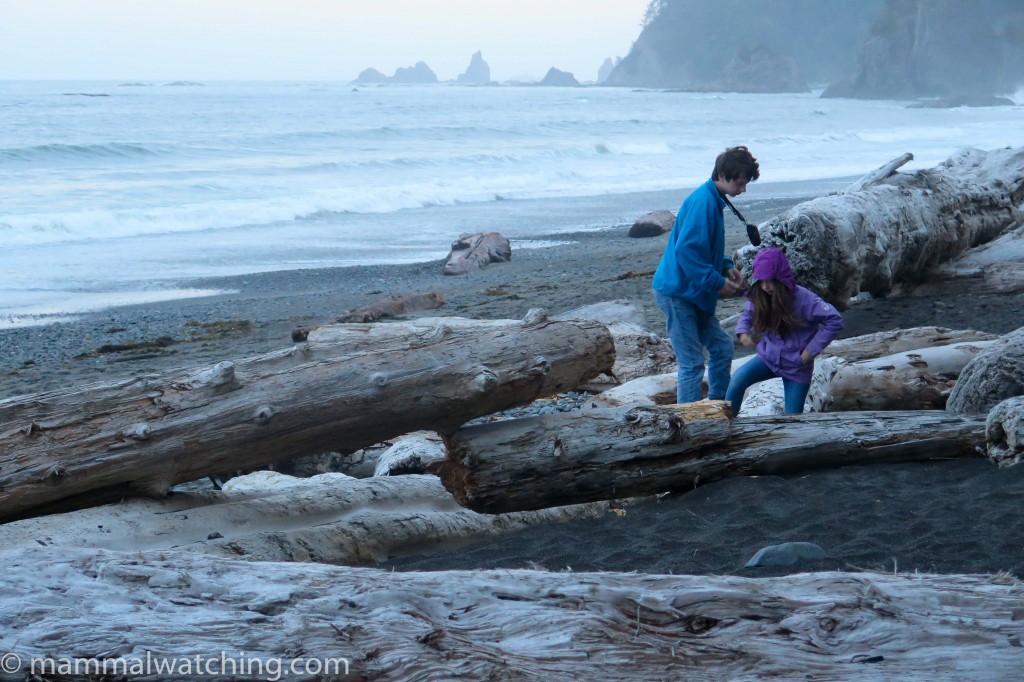
Just north of Rialto Beach
In July 2015 I spent a night camping near Rialto Beach with my kids. A cancelled flight, a missed ferry and a speeding ticket conspired to slow us down and the journey from Lewiston, Idaho took 12 hours. We arrived on the beach after dark, about three hours later than I had hoped.
I’d heard rumours that Western Spotted Skunks were a sure thing at the Hole in the Wall campsite, a mile up the beach from the parking area. But my kids, still traumatised from one horror film too many, refused to walk that far in the dark. So we pitched camp as soon as it was allowed, and still half a mile short of Hole in the Wall.
No Skunks that night, but I did see my first Trowbridge’s Shrew, and several Keen’s Deer Mice during the night. <<In mid 2018 Charles Hood told me that there were no skunks at the campsite, and none of the rangers had heard of any recent appearances… so this might now be a dead end.>>
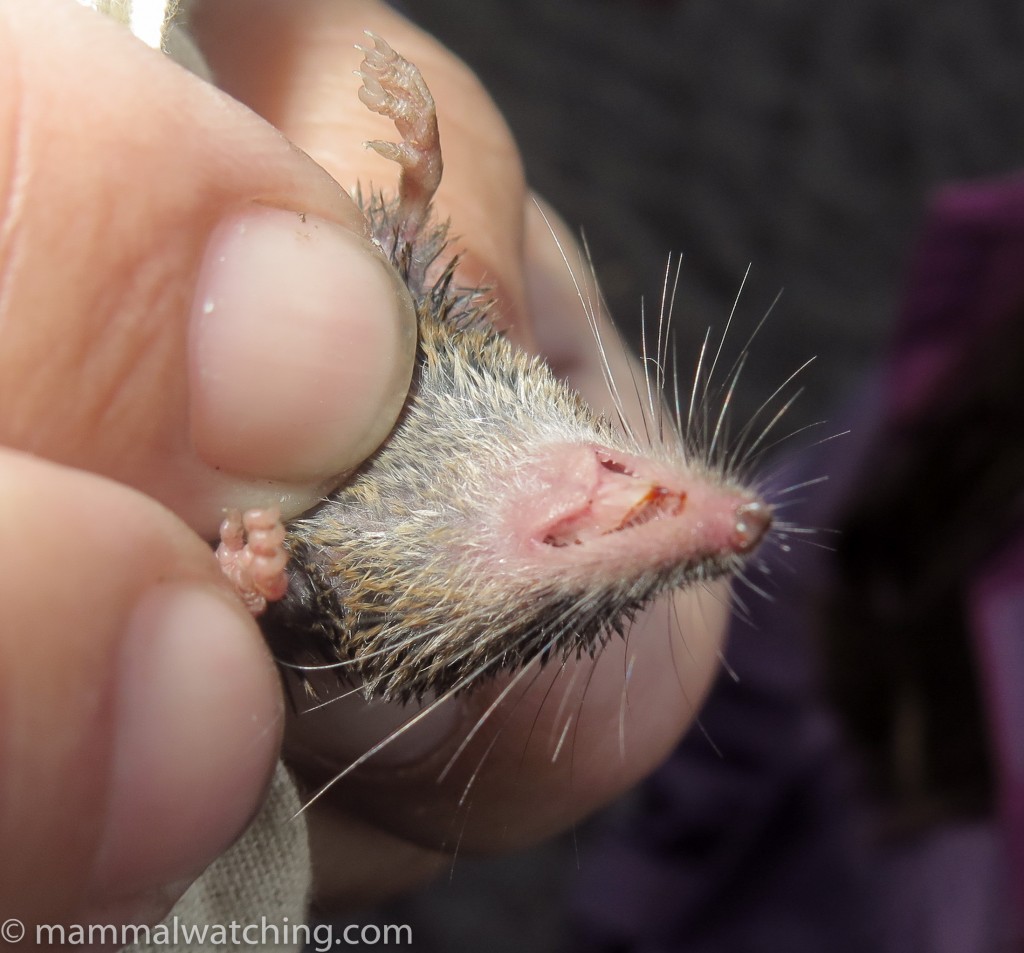
Trowbridge’s Shrew, Sorex trowbridgii
Walking back to the car my son almost trod on a sleeping Sea Otter which drowsily waddled back to the ocean and swum off. Quite adorable.
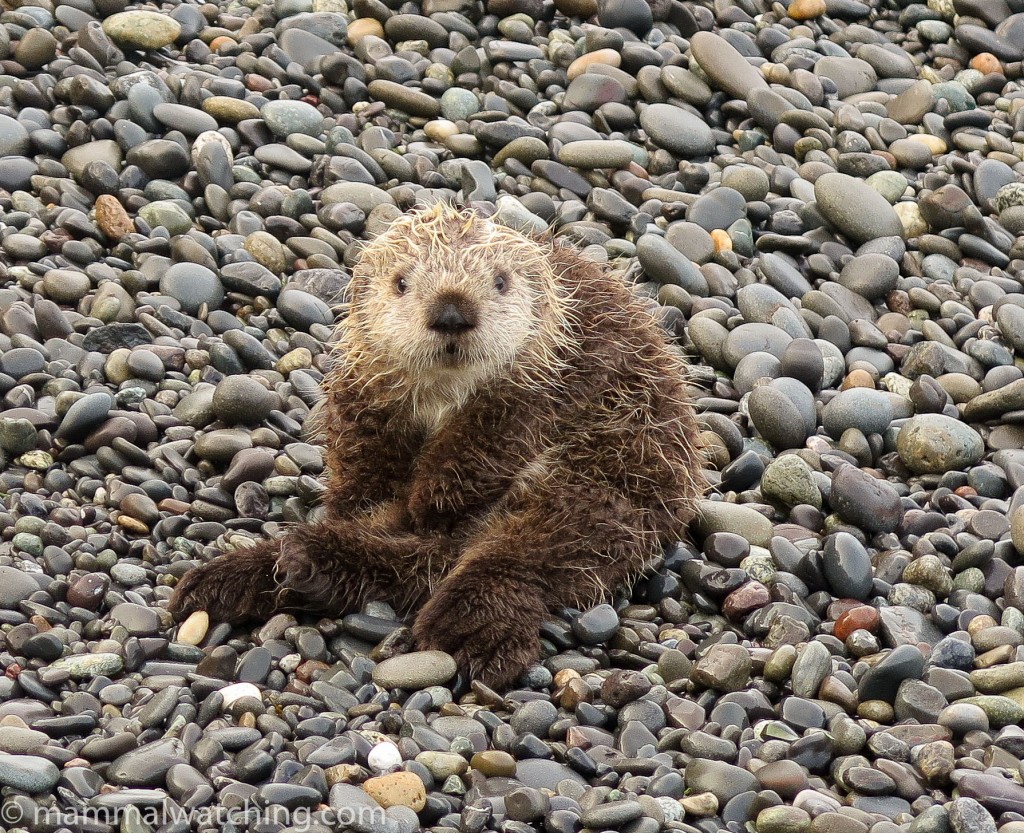
Sea Otter, Enhydra lutris
Mount Rainier
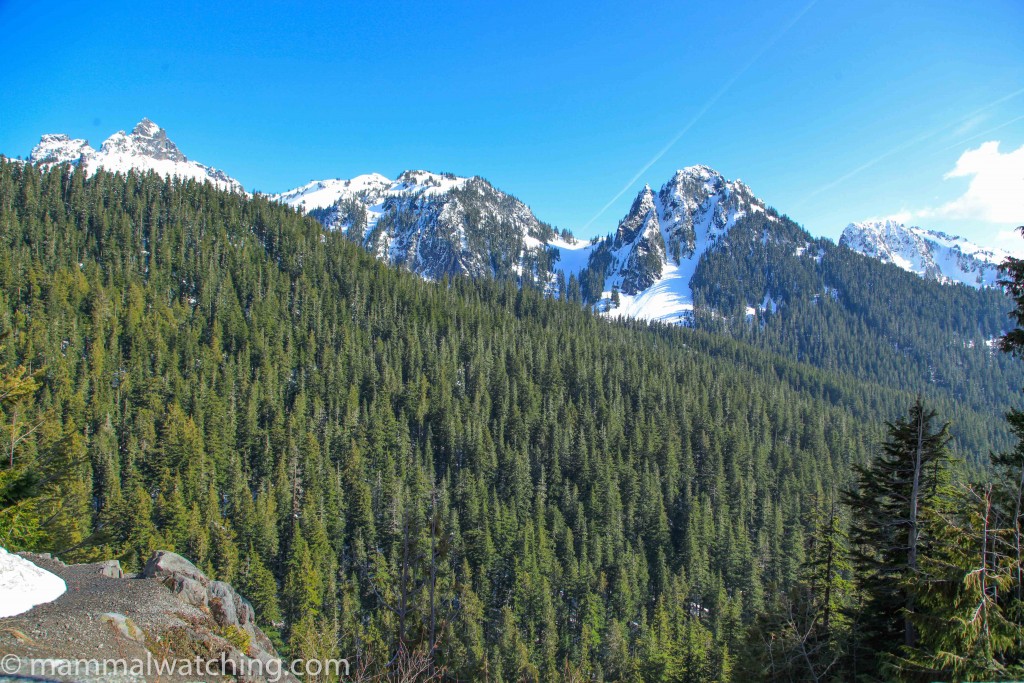
I have visited Mount Rainier four times. The first time was in 2009, when I went for a night to look for Cascade Golden Mantled Ground Squirrels, apparently abundant in the park. Unfortunately the weather was against me as the snow that had fallen the day before in the Olympics reached Mount Rainier when I did. I was told that the ground squirrels had been all over the Paradise area of the park a few days before I got there. But though I saw what were probably their tracks a couple of times in the snow I couldn’t find an animal.
The only mammals I saw during the day were a couple of Douglas Squirrels. I did however head out for a short spotlight in a half-hearted attempt to see a Northern Flying Squirrel. I decided to take a look in some sub alpine forest and took a walk in the rain around the Cougar Rocks Campsite near Ashford at 11 p.m. As I was almost back at the car I heard something scrabbling in a tree and then a (presumably second) animal landed on the trunk right above my head. I got great views, though I had left my camera in the car. The squirrels were at the corner of the campsite drive and the highway. Unfortunately the species has since been split and both (the new) Humboldt’s and Northern Flying Squirrels occur in this area. So I am not sure which species I saw.
In August 2010 I returned to Mount Rainier for three hours with my kids on the way to Seattle airport. The weather wasn’t great and after talking to the ranger it seemed that Cascade Golden Mantled Ground Squirrels are not quite as abundant as I had imagined. She said that there were often some running around a couple of miles along a trail near Myrtle Falls but I didn’t really have enough time to get there, and only saw Yellow-Pine Chipmunks along the first mile. Reflection Lake was also a spot for them. she said. I saw Least and Yellow-Pine Chipmunks there and although it was possible that one squirrel that jumped across the trail in front of me was a Cascade Golden Mantled, I couldn’t be certain.
Katy proudly spotted a Hoary Marmot just next to the road near Reflection Lake, about a mile or two before the lake coming from Paradise.
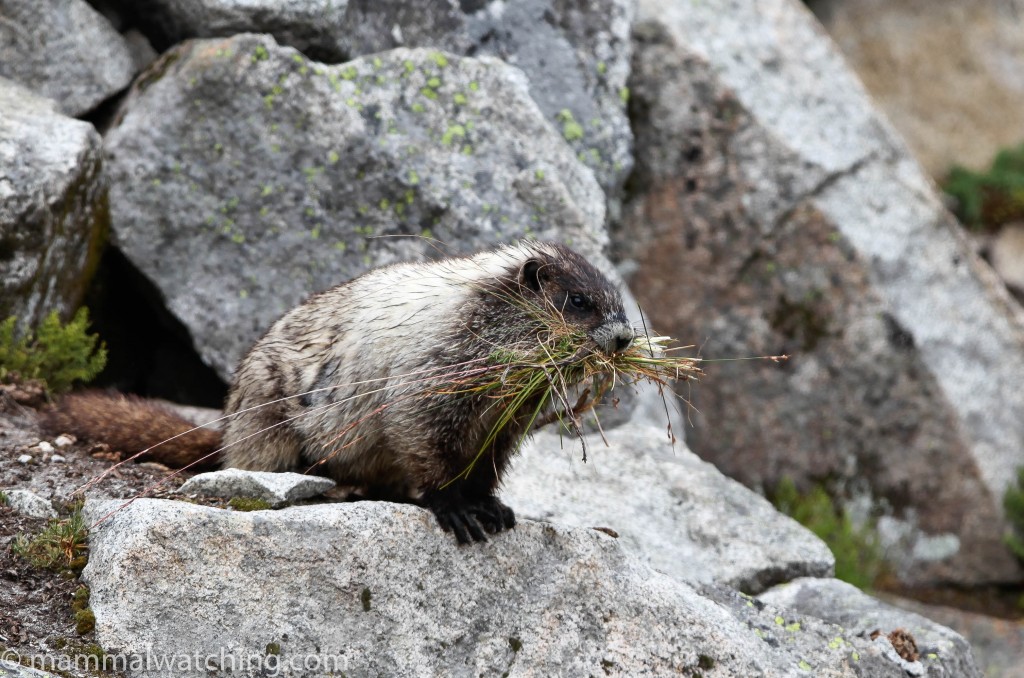
Hoary Marmot, Marmota caligata
I went back in early May 2012 for a third visit and once again missed the Cascade Golden-mantled Ground Squirrels. On each visit the rangers gave me conflicting – but apparently knowledgeable – advice on where to see them. John Fox said they were abundant at the Sunrise Visitor Centre in mid summer. I’d previously been in the park in late August (when I was rushed) and in October (when it was snowing) and failed to find them both times around the Paradise visitor centre. In early May the road to Sunrise was still well and truly snow bound, and there was far too much snow around Paradise to even bother looking.
A ranger told me that she had occasionally seen the ground squirrels lower down in the park, including at the Kautz Creek picnic area, just a mile or two after the Nisqually entrance. But she hadn’t seen any that year and although I looked there I couldn’t see any squirrels at all. Presumably animals are still hibernating even if the snow had gone from the lower stretches of the park. I guess the Cascade Golden Mantled Ground Squirrel has a very short seasonal window of activity – possibly just late May through late August – on Mount Rainier.
And so I had to make do with a few Mule Deer and a couple of the lovely Cascadensis subspecies of Red Fox hanging at the side of the road. They are markedly different to other Red Foxes I’ve seen around the world.
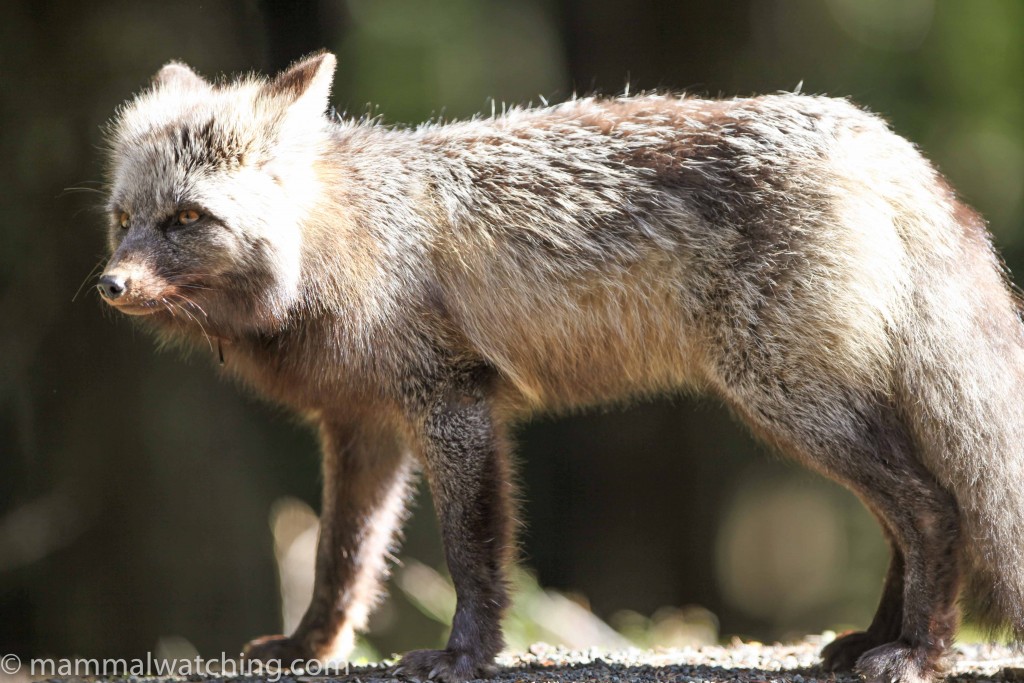
Red Fox, Vulpes vulpes cascadensis
On 30 August 2014 I was back for a fourth attempt. Cheryl Antonucci had seen them on Rainier 10 days before I arrived and gave me very specific instructions. She’d seen them all over the rocks by the lookout at Frozen Lake where they were begging for food, a mile and a half along the trail with the same name. Meanwhile her mother had seen and photographed one in the picnic area along the main trail 100 yards from the visitor centre. She would, she said, “be amazed if I missed them”.
Such confidence makes me nervous. And rightly so. I was in the car park at 7.30 a.m. after seeing Elk and Mule Deer on the drive up. By 9 a.m. I was desperately searching around the lake. The weather was cloudy and cool, with patches of low cloud drifting across the trail and reducing visibility. I saw heaps of Yellow-pine Chipmunks, perhaps some Townsend’s Chipmunks, and a couple of Pikas in the steep talus slope about 5 minutes before Frozen Lake. But no ground squirrels, despite my very ostentatious rustling of food wrappers and noisy – ooh this food is so tasty – chewing.
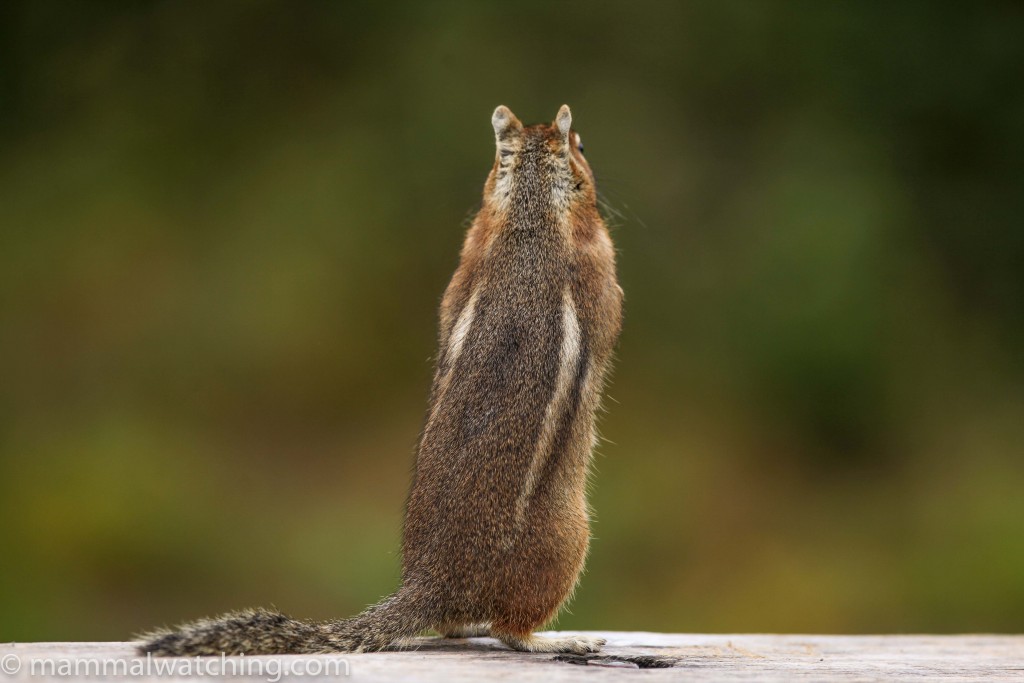
Cascade Golden-mantled Ground Squirrel, Spermophilus saturatus
No squirrels on the way back down either, even though Cheryl had seen a couple cross the trail. So I decided to try 10 more minutes in the picnic area and wandered around squeaking my lungs out. And then, at 9.45 a.m. I spotted a Cascade Golden-Mantled Ground Squirrel squeaking back on top of a picnic table. Thank you mammal gods. I was about to hang up my binoculars for good.
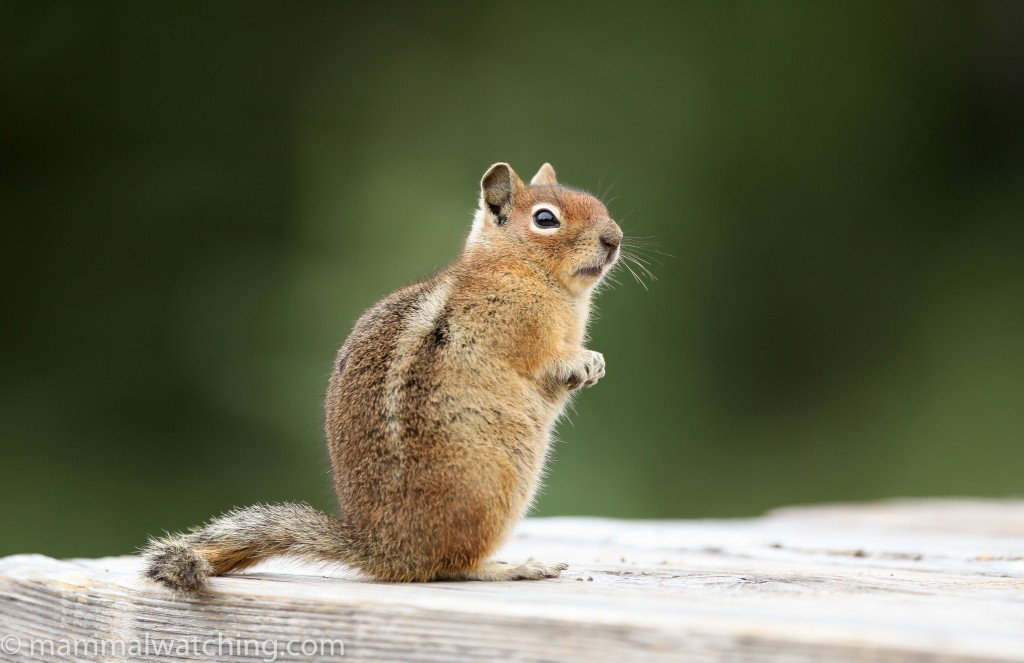
Cascade Golden-mantled Ground Squirrel, Spermophilus saturatus
Finally! Though the weather was not great I am surprised that I didn’t see them more easily given Cheryl’s experience. I think this species must be a reluctant early riser and dislike anything but perfect weather. Perhaps they evolved in Palm Springs.
Central Washington
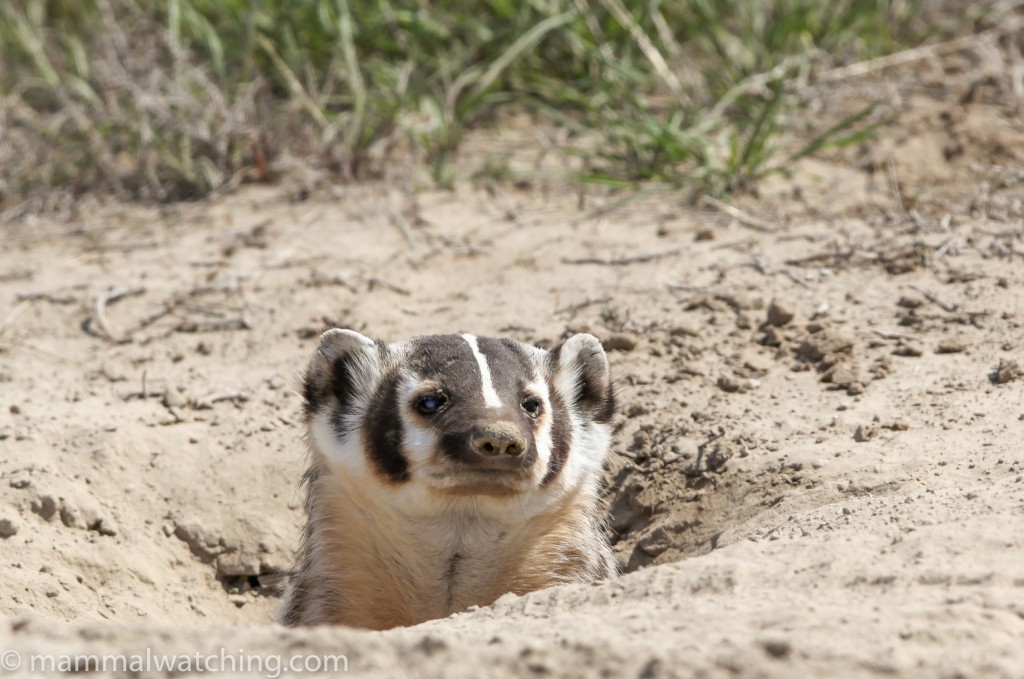
American Badger, Taxidea taxus
Prosser
In early May 2012 I visited the Snoqualmie Winery at Prosser, about 3 hours from Seattle to look for Townsend’s Ground Squirrels.
A Yellow-bellied Marmot had taken up residence in the culvert John Fox mentioned in his post,
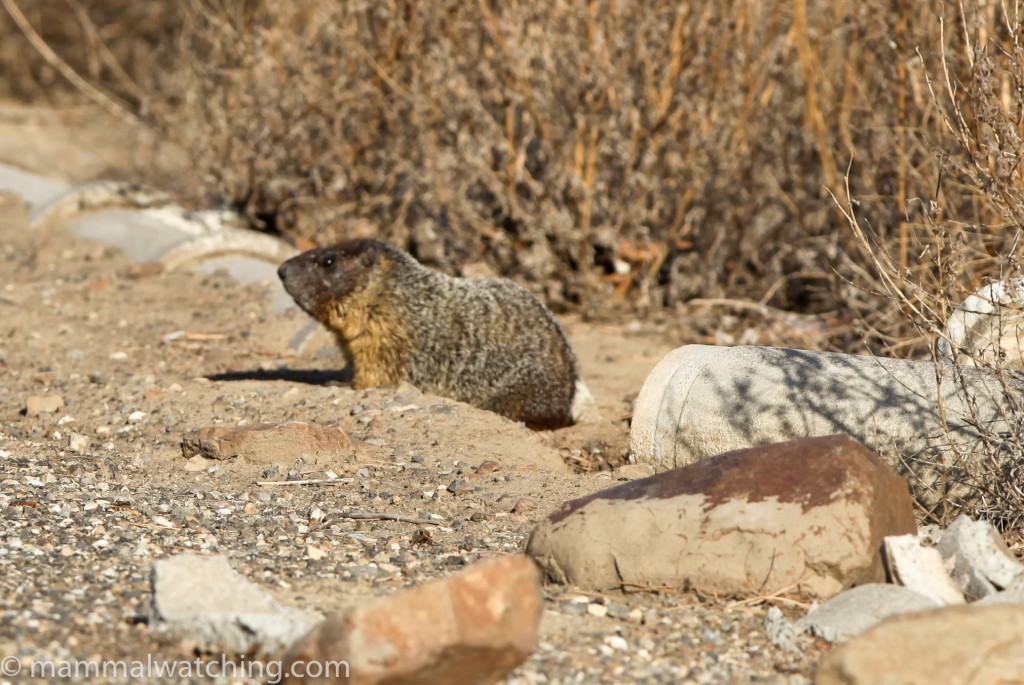
Yellow-bellied Marmot, Marmota flaviventris
But I found a Townsend’s Ground Squirrel at the beginning of the short drive into the winery, on the corner of the driveway and Frontier road – on the right as you turn into the winery.
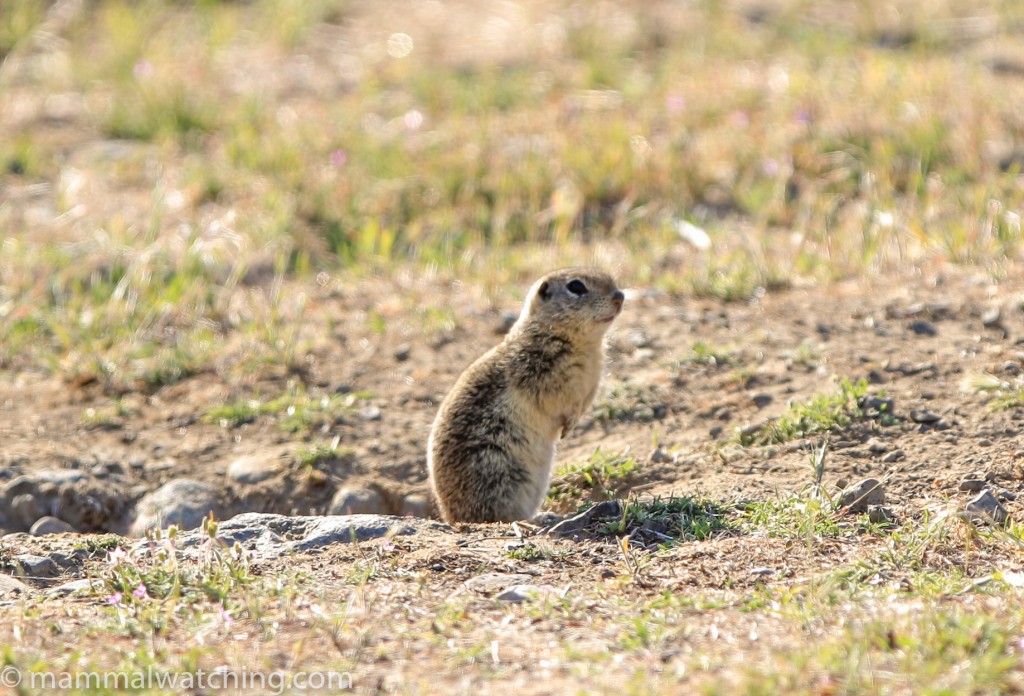
Townsend’s Ground Squirrel, Urocitellus townsendii
I also saw a ground squirrel in the central reservation of I82, at mile marker 75, and at least two more during the first few miles of Hwy 22 (the road south of Prosser to Paterson). So this area is a bit of a hotspot for them. And I also saw – at high speed – what was presumably a Mountain Cottontail.
Moses Lake
In early May 2012 I also visited Moses Lake and cruised a few of the dirt roads running north off of Hwy 252 that lead to the Potholes Dam Reserve (John Fox details the spot in his report and it is only a few miles along Hwy 252 from Hwy 17, just south of Moses Lake). I was looking for Washington Ground Squirrels and I saw a few on the same dirt road John described, as well a couple more along Hwy 252 including one just before the eastern edge of the dam wall.
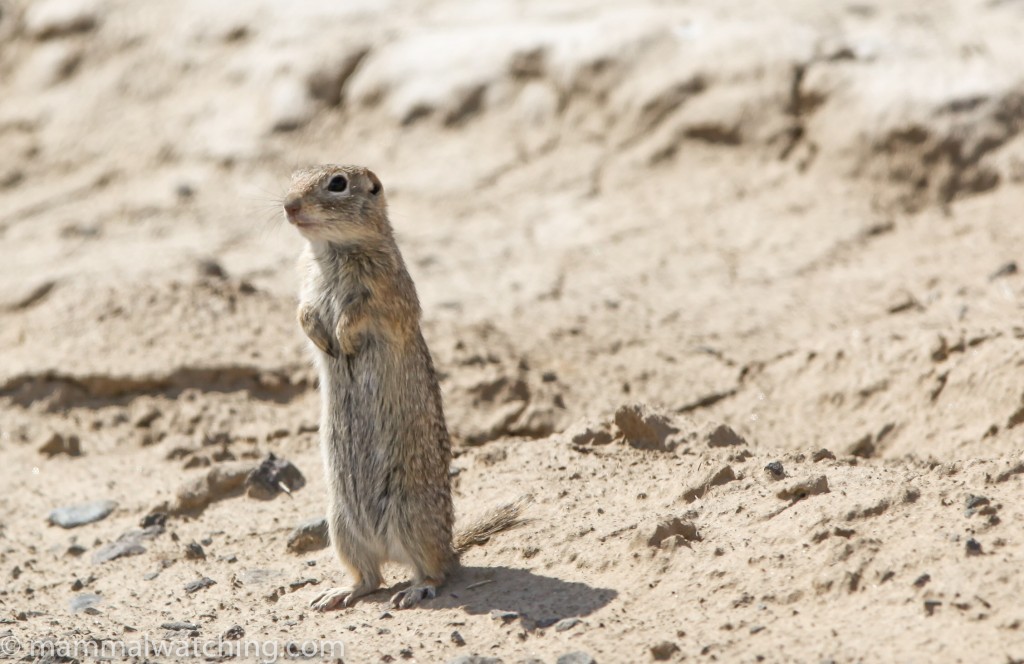
Washington Ground Squirrel, Urocitellus washingtoni
I was taking a photo of one squirrel – about 200 yards along the dirt road where John saw his – and I started squeaking to attract its attention. I woke an American Badger in the process: fun to see this species emerge from its burrow at midday.
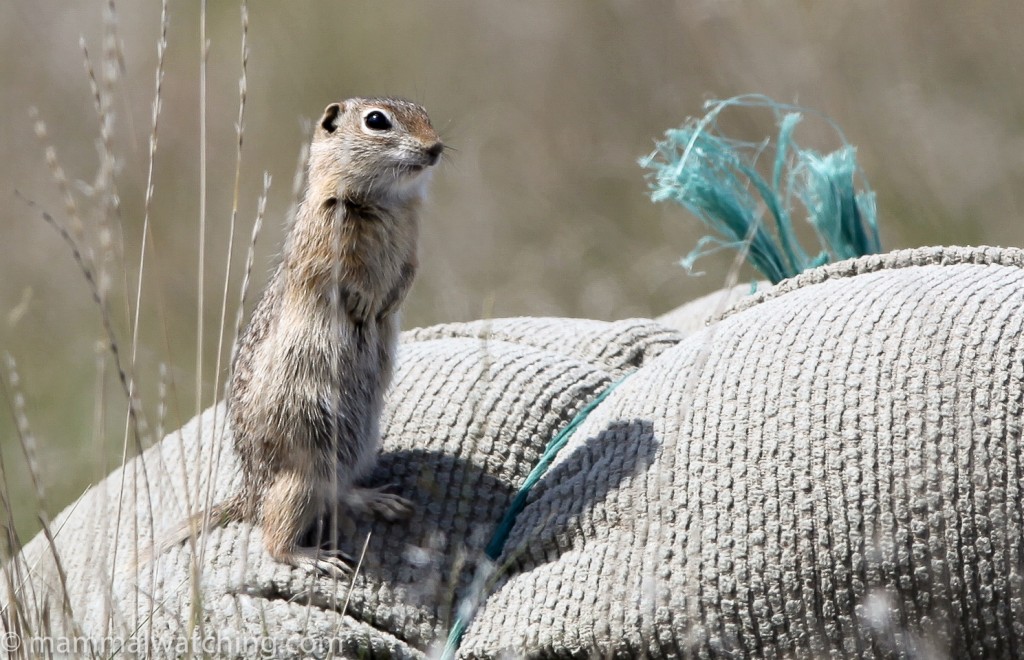
Washington Ground Squirrel, Urocitellus washingtoni
Community Reports
California to Colorado via Washington, 2023: Brian & Eileen Keenan’s report featuring mammals including Thirteen-lined Ground Squirrel and Silver-phase Red Fox in Colorado and Aplodontia in Washington.
Olympic National Park, 2022: 1 day & several species including Olympic Marmot, the local subspecies of Yellow-pine Chimpunk and a Black Bear with cubs.
Mount Rainier & Mount St Helens, 2022: Greg Steer’s advice on where to see Cascade Golden-mantled Ground Squirrels and Hoary Marmots.
Pacific Northwest, 2019: Daan Drukker, 3.5 weeks & 40 species including Long-tailed Weasel, Northern Rightwhale Dolphin, and Allen’s Chipmunk. Great report.
Chasing Squirrels and Chipmunks in the West, 2016: Andy Murch, 2 weeks. 1 marriage proposal & many rodents including Hopi and Cliff Chipmunks.
Grand Ground Squirrel Expedtion, 2016: John & Karen Shrader, 9 days & 22 species including Sewellel, American Badger and 9 ground squirrels.
Vancouver Island, Montana and a bit of Wyoming and Washington, 2014: Jon Hall including Pygmy Rabbit and Vancouver Island Marmot.
Townsend’s, Merriam’s and Washington Ground Squirrels, 2012: Jon Hall
Montana, Idaho, Wyoming and Washington, 2010 : John Fox, 13 days, 4400 miles and 34 mammals including a Long-tailed Weasel and hearing a Pygmy Rabbit.
Pacific Northwest, 2006: Mark Hows, 2 weeks & 27 species of mammals including a Marten.
Also See
Carnivore Watching in Washington or BC? (August 2012)
Ribbon Seal (vagrant) in Seattle (Jan 2012)
Marmothon, 2006: Dave Robichaud’s account of seeing all 6 Marmot species in a calendar year, including Olympic and Yellow-bellied Marmots in Washington.


Leave a Reply
You must be logged in to post a comment.